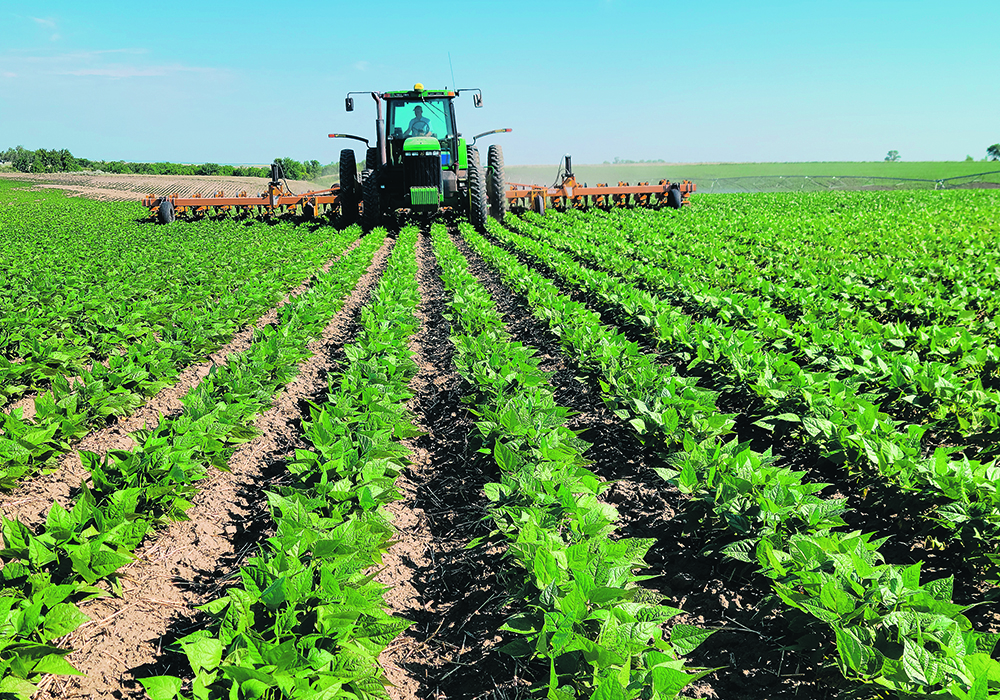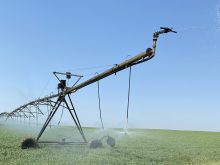With the help of irrigation, producers Jeff Ewen and Nigel Oram have had substantial success with dry beans in Saskatchewan, but there are challenges that come with being a small community of growers.
They recently advocated for more dry bean acres being added to crop rotations, during the Saskatchewan Irrigation Conference in Saskatoon.
Dry beans, like pinto, navy, and black beans, do not possess oils within the seed like soybeans, but are still nitrogen-fixing plants through nodules in the root systems.
Irrigation was the main reason Ewen got into dry bean varieties on his farm near Riverhurst, Sask., he said, especially with the strong genetics coming out of the University of Saskatchewan’s Crop Development Centre, like CDC Blackstrap.
Read Also

Why feds imposed EV tariffs
Moe and Kinew have a fight on their hands when it comes to eliminating the EV tariff. Canada has to worry about pissing off the U.S. and Mexico and hundreds of thousands of auto workers.
The knowledge on growing edible beans exists but can be more difficult to find compared to traditional crops. The expansion of irrigated acres in Saskatchewan has also meant more farmers are looking for something new to add to their rotations, said Ewen.
“They’re looking at it and saying, ‘well, I’ve traditionally grown peas or lentils on my dry land, that’s what I know how to grow.’ But they get looking at the economics of it and they get looking at the benefit of irrigating those crops and they’re saying, ‘well, there’s got to be something better.’”
Ewen has also presented dry beans as an addition to dryland rotations in southeastern Saskatchewan, especially as they look to pea alternatives because of issues with root rot and aphanomyces.
However, farmers tend to stick with what they know, and Ewen has seen growers introduce crops like soybeans and fababeans into their acres instead of taking a chance on dry bean varieties.
Oram started growing dry beans more than 15 years ago as a fresh addition to his rotation and has never looked back.
As an agronomist based in Bridgeford, Sask., Oram said he advises his clients to put at least a third of their acres into dry beans because he’s seen the benefits outweigh the risk more often than not.
However, with only 5,000 acres grown across the province, dry bean growers are missing a sense of community, like dry bean producers in Manitoba have.
Oram said he had bean mites this year, which are hard to scout for.
“If we lived in Manitoba, all the neighbours would be talking about all the problems, but they’re a niche crop, so you’ve got to figure the problem out,” he said.
He admits the decision to grow dry beans is more difficult than just throwing some seeds in the ground, but there are also a wide variety of benefits to adding dry beans into crop rotations, especially with the number of varieties that can thrive under irrigation, he said.
Rotational benefits and the high returns also balance out the challenges of growing the crop.
In 2023, he said they had issues with heat stress, bacterial blight, baldhead, and white mould.
Even then, Oram said he saw substantial returns of 50 percent more than traditional crops, while still dealing with 30 percent higher input costs. Many of those costs are caused by a lack of support from the industry, he said.
Much of Oram’s transportation costs come from the need to buy seed from Manitoba because of a lack of seed facilities in Saskatchewan.
Oram said if more irrigated farmers grew dry beans, they’d have more processors willing to join the market.















